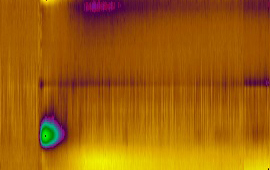
Research in the Carelli Lab incorporates a multidisciplinary approach in rodent models to examine how the brain processes information about rewards, how that information is used to guide goal-directed actions, and how it is altered in drug addiction. At the core of all our work is the development of sophisticated behavioral tasks that enable us to examine discrete aspects of reward processing. We then combine our behavioral tasks with various methodologies including: multi-neuron recording (single unit/multi-site and local field potential), electrochemistry (fast scan cyclic voltammetry, FSCV), optogenetics (alone and in combination with electrophysiology), calcium imaging methods, and a preclinical model of non-invasive brain stimulation. A brief overview of some topics currently under investigation in my lab are available below.
Neural Circuits Underlying Negative Affect
The ability to seek out situations that elicit pleasure and avoid those that lead to aversion or discomfort is a fundamental ability we all share, yet dysfunctional hedonic processing is prevalent in numerous psychiatric illnesses including substance use disorders (SUDs), alcohol abuse, and depression. As such, it is critical to understand the basic neural mechanisms underlying aversive affective states to ultimately apply treatment strategies to restore normal hedonic processing and aid in the recovery of maladaptive behaviors in mental illness. Here, we employ a multifaceted neuroscience approach to examine the role of discrete prefrontal neural circuits in negative affective processing, and how strengthening disrupted neural signaling in those systems can reduce negative affect. We focus on one type of behavior (taste reactivity, TR), measured in innate (unconditioned) situations and during conditioned taste aversion (CTA) and its extinction (restoration of positive affect). This work will provide critical insight into effective treatment strategies, such as noninvasive brain stimulation, to restore normal hedonic processing and aid in the recovery of maladaptive behaviors contributing to psychiatric illnesses.
Unraveling Neurobiological Mechanisms of Cocaine Addiction
The DSM-V recognizes the emergence of negative affect (e.g., dysphoria, irritability, anhedonia) in addiction, where prior rewarding experiences (e.g., food, job) become devalued as the addict continues to seek and use drug despite harmful outcomes. We continue working with a novel behavioral model we developed of natural reward devaluation by cocaine where we showed that a drug-associated cue elicits a conditioned aversive state that is quantifiable in terms of behavior, neural and chemical processing and, critically, predicts subsequent cocaine consumption. Other related lines of research are examining the neurobiological consequences in the NAc of drug removal (abstinence, known to exert numerous neuroadaptations linked to relapse), how a history of cocaine alters aspects of associative learning, and the role of reward choice in normal versus addicted states. In addition, we are examining processing within the larger neural circuit in which the NAc is embedded, including for example reward-processing within the insula and prefrontal (prelimbic and infralimbic) cortex. Additional studies are examining the role the ‘anti-reward’ system (e.g., RMTg and LHb) in these processes.
Preclinical Model of Non-Invasive Brain Stimulation
While it has proven extremely difficult to develop effective therapies to treat substance use disorders, one exciting approach that holds great promise is Non-Invasive Brain Stimulation (NIBS). Although studies using NIBS in humans are encouraging, virtually no information is known about how any form of NIBS can modulate maladaptive brain pathologies linked to repeated drug use, since rodent models of NIBS are lacking. Working with an expert in NIBS, Dr. Flavio Frohlich, the Carelli lab developed a rat model of one form of NIBS, transcranial alternating current stimulation (tACS). Ongoing studies are using this approach to: 1) determine if tACS can reverse cocaine-induced deficits in neural signaling and one aspect of associative learning (behavioral flexibility) and 2) if it can modulate drug taking/seeking behavior and underlying neuroadaptations. Since this approach is ‘noninvasive’ (i.e., electrical stimulation is applied to screws mounted on the skull, not in brain), it holds great translational value.


